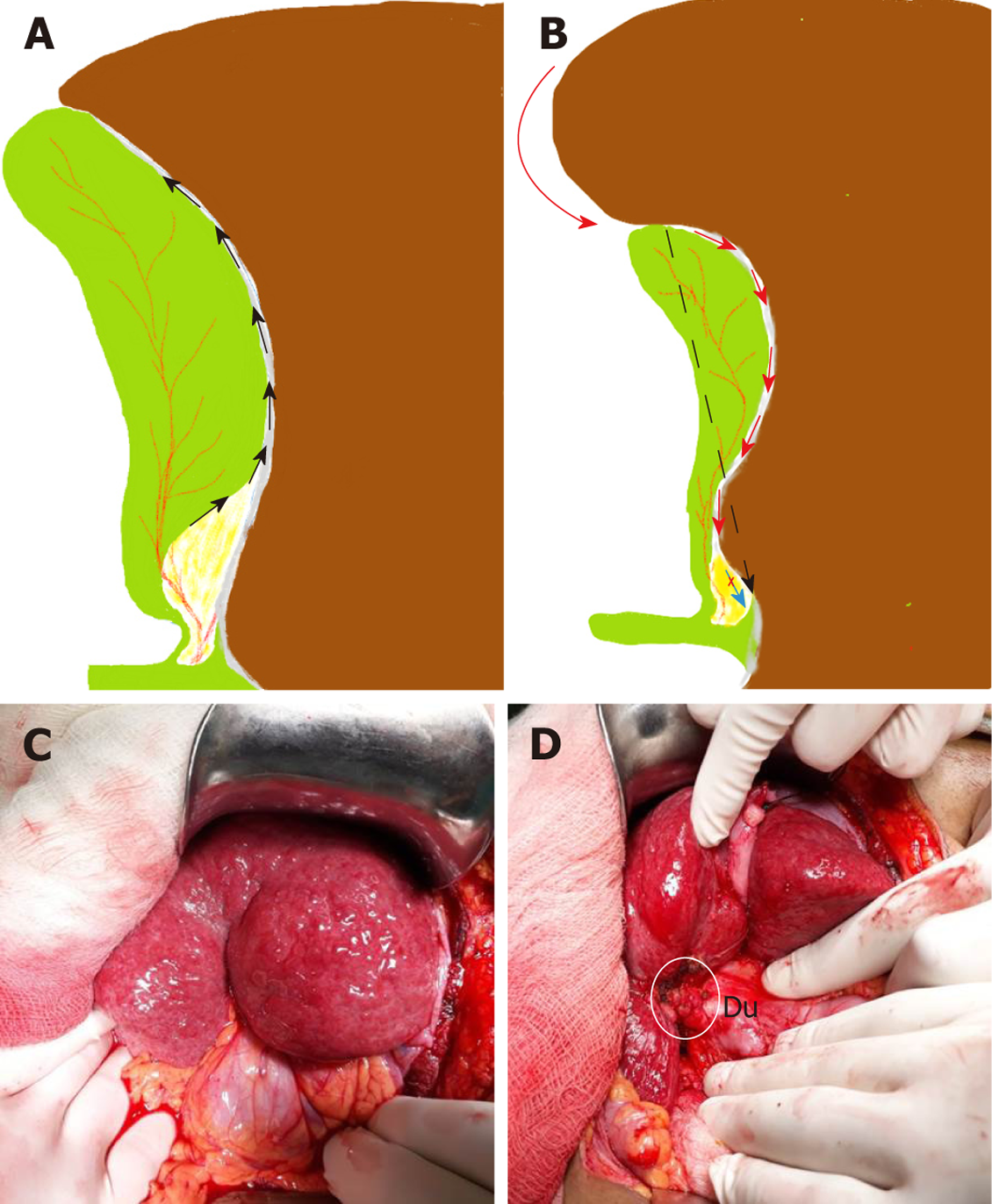Copyright
©The Author(s) 2019.
World J Gastrointest Surg. Feb 27, 2019; 11(2): 62-84
Published online Feb 27, 2019. doi: 10.4240/wjgs.v11.i2.62
Published online Feb 27, 2019. doi: 10.4240/wjgs.v11.i2.62
Figure 3 Understanding surgical planes during dissection.
A: Usually, in uncomplicated cases, plane of dissection remains close to the gallbladder that leaves behind the cystic plate attached to liver; B: In chronic cholecystitis, with small shrunken gallbladder, liver puckering develops (red curved arrow) with shortening of the cystic plate (black interrupted arrow). With loss of plane, the surgeon tends to breach the cystic plate (red arrows) resulting in bleeding from the liver. In addition, there is a risk to enter in to the right portal pedicle during fundus first approach (blue arrow) if such danger is not appreciated; C: Pucker sign as noted during open cholecystectomy; D: Small contracted scarred gallbladder (in white circle) was identified after separating adherent omentum and colon. Duodenum (Du) was densely adherent to the gallbladder. Findings such as in C and D suggest difficult cholecystectomy.
- Citation: Gupta V, Jain G. Safe laparoscopic cholecystectomy: Adoption of universal culture of safety in cholecystectomy. World J Gastrointest Surg 2019; 11(2): 62-84
- URL: https://www.wjgnet.com/1948-9366/full/v11/i2/62.htm
- DOI: https://dx.doi.org/10.4240/wjgs.v11.i2.62









